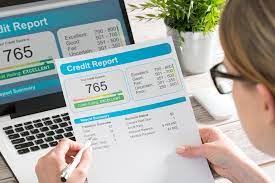What All You Need To Look For When Doing Credit Monitoring In Your Credit Report

A credit information report is a list of information about how you handle your loans and credit cards. Credit rating agencies use this information to figure out if you are a good credit risk. This will be partly based on how well you have paid back loans in the past, as reported by a number of financial institutions and lenders. When you get a loan or a credit card, lenders and bureaus keep track of how you behave and how well you pay your bills. This is true no matter how much the loan or credit card is for. Your personal and company credit report have information like a section on inquiries, account information, a summary, and more.
Most of the time, a person’s credit report from a credit rating agency helps them better understand their own financial situation through credit monitoring. This is an important part of how a lender decides whether or not to give a loan or credit card. Because of this, it is important to keep a close eye on your credit report from the main credit agencies and review it often, at least once a year.
Since each credit bureau is required by law to give you a free credit report at least once a year, you should ask for a free credit report from each bureau so that you get one at least once every three months.
Let’s talk about some of the most important things you should look for in your credit report, no matter which credit bureau’s services you wish to choose to use.
Number for reference
This is a 15-digit number that is made up for each credit report so that the information you give can be checked for credit monitoring. It may also be called a control number, order number, or report number, depending on the bureau. If there are any questions or discrepancies in your credit report, you will need to give this number to the credit bureau so that the problem can be fixed.
Information about the customer
Personal information regarding the customer, like their name, birth date, gender, PAN, passport details, and any other sensitive information given by the lender, is included here. This information can help identify the borrower, and the requirements listed in this section don’t change much from one credit bureau to the next.
This part of your company credit report has the borrower’s contact information, such as their addresses, phone numbers, cell phone numbers, and email addresses. The address category is aimed at any form of communication which credit rating agencies or lenders may need in the future. It says whether the address is a home address, a business address, a permanent address, or even a temporary address, like if living on rent.
A brief overview of the past and present credit accounts
This part of both the company credit report and your personal report is the most important because it has information about your loans and credit cards. It is put together by credit rating agencies. It lists the name of the lenders, the type of credit that was taken out (like a home loan, car loan, or credit card), the account number, whether the loan was held jointly or individually, and the date each account was opened, most recent payment date, the taken and outstanding loan amount, the amount overdue (if any), etc. If something is being contested, it may be shown in a separate section. Once the transaction is complete, the contested details or information may or may not be updated, depending on the lender’s confirmation.
Inquiries section
Credit rating agencies doing your credit monitoring put questions about credit in this section most of the time. When you apply for a loan or credit card and the lender decides to look at your report, the related inquiry will certainly be added to your company credit report. When you apply for a loan or credit card, this is what happens. Since they are considered “hard” inquiries, your credit score could go down as a direct result. In this area, you can find information like the lender’s name, the application date when it was sent, the type of loan, and its size. The date of the inquiry might not be the same as the date the credit application was sent since the lender might not always make the inquiry on the same day the credit application was sent.
Score for credit
This part of your report shows your credit score, as well as the different factors that were used to calculate it and how much weight each one was given. You should really think about this part, and if your score is low, you should start taking steps right away to improve it. Remember the things that were talked about in the report, note the loopholes or actionable points and accordingly work on all of them so as to see your next credit report having a higher credit score for you.
The borrower should look closely at the important parts of his or her report, which have been listed above. You should pay close attention to everything on your report, as all such information is factored in by lenders and bureaus during credit monitoring. This is because, in the end, your credit report shows both your financial history and how you handle paying back credit. You can get your credit score and report for free from online markets, and if you go to their websites every month, you can also get updates. Monitoring and regularly ensuring of reviewing your report is important to make sure you don’t miss any mistakes or signs of fraud. If you find mistakes in your company credit report, you need to let the credit bureau and the lenders who are involved know about them. If you don’t fix the mistakes, your credit score could go down, making it harder for you to get credit in the future.
VISIT FOR MORE ARTICLE : timesmarket.org




